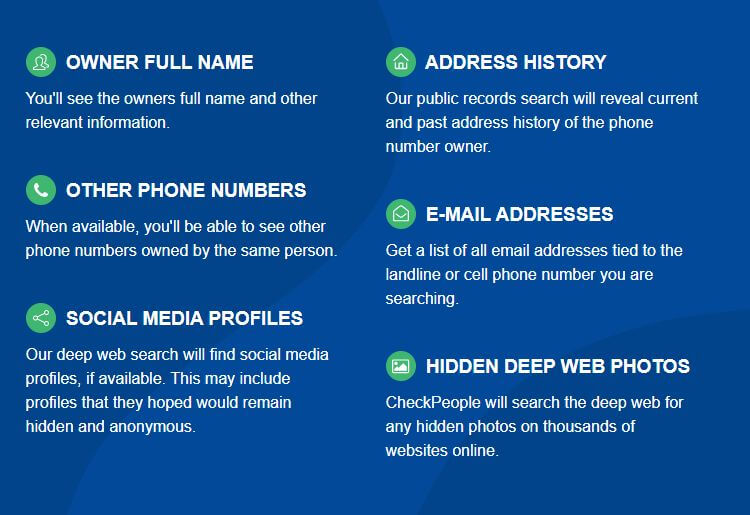
Ever received an unknown call from a landline number and wondered who was on the other end? The good news is, there are tools available to help you uncover the identity behind that mysterious phone number. This article will guide you through the process of finding the owner of a landline number using reverse phone lookup services. We’ll explore how these services work, discuss privacy concerns, and provide tips for choosing a reliable service.
This comprehensive guide will delve into the world of reverse phone lookups, explaining the different types of services available, their limitations, and best practices for using them effectively. By the end, you’ll have a clear understanding of how to find landline owners while respecting privacy concerns.
Reverse Phone Lookup Services
Reverse phone lookup services are online platforms that allow users to search for information associated with a specific phone number. These services typically work by accessing vast databases containing publicly available records linked to phone numbers. When you enter a landline number into a reverse phone lookup service, it searches its database for matching records and returns potential results, including the name, address, and sometimes even other details about the phone number owner.
There are various types of reverse phone lookup services available, ranging from free basic options to premium subscription-based platforms. Free services often provide limited information, while paid services offer more comprehensive data and advanced features. Some popular reverse phone lookup services include Whitepages, Spokeo, and Intelius.
These services utilize different methods to compile their databases. Some may scrape publicly available information from websites and social media profiles, while others may partner with telecommunication companies or government agencies to access official records. The accuracy and comprehensiveness of the data provided by each service can vary depending on its sources and update frequency.
Finding Landline Owners

Using a reverse phone lookup service to find landline owners is generally a straightforward process. Most services have user-friendly interfaces that guide you through the search process.
- Visit the website: Start by selecting a reputable reverse phone lookup service.
- Enter the landline number: Input the complete landline number into the designated field on the website. Ensure accuracy as even a small error can lead to incorrect results.
Submit the search: Click the “Search” or “Lookup” button to initiate the search process. The service will then query its database for matching records.
Review the results: Once the search is complete, you’ll be presented with potential matches based on the entered landline number. Carefully review the information provided, including the name, address, and any other details associated with the phone number.
Privacy Laws and Data Access
It’s important to remember that privacy laws play a significant role in data access and sharing. While reverse phone lookup services utilize publicly available information, there are restrictions on accessing certain sensitive data.
For example, some jurisdictions have regulations limiting the disclosure of personal information without explicit consent from the individual. Additionally, telecommunication companies may have their own policies regarding the release of customer data to third-party services.
Therefore, it’s crucial to be aware of these legal limitations and use reverse phone lookup services responsibly. Avoid using this information for any illegal or unethical purposes, such as harassment or stalking.
Accuracy of Results

The accuracy of results obtained from reverse phone lookup services can vary depending on several factors. The comprehensiveness and reliability of the service’s database, the frequency of data updates, and the availability of public records all contribute to the accuracy of the information provided.
It’s important to note that not all landline numbers are listed in these databases. Some individuals may choose to opt out of public listings or use unlisted numbers, making it difficult for reverse phone lookup services to find associated information.
Furthermore, data inaccuracies can occur due to human error during record compilation or changes in personal information over time. Always treat the results obtained from a reverse phone lookup service as potential leads and verify the information through additional sources if necessary.
Choosing a Reliable Service
With numerous reverse phone lookup services available, selecting a reliable one is essential for obtaining accurate and trustworthy information. Consider the following factors when making your choice:
Reputation: Research online reviews and ratings from other users to gauge the service’s reputation for accuracy and reliability. Look for services with positive feedback and a history of providing accurate results.
Features: Determine which features are important to you, such as detailed reports, background checks, or email lookup capabilities. Choose a service that offers the specific features you require.
Pricing: Compare pricing plans from different services to find one that fits your budget. Consider whether you need a one-time search or a subscription for ongoing access.
Customer Support: Look for services that offer responsive and helpful customer support in case you encounter any issues or have questions.
Conclusion
Reverse phone lookup services can be valuable tools for identifying landline owners, providing insights into unknown callers and helping to verify information. However, it’s crucial to use these services responsibly, respecting privacy laws and data access limitations. By choosing a reputable service, understanding the potential accuracy limitations, and verifying information through additional sources, you can effectively utilize reverse phone lookups while maintaining ethical practices.
